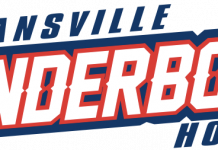By Carolina Puga Mendoza
TheStatehouseFile.comÂ
INDIANAPOLIS—While Indiana returns to its old lifestyle and sheds face masks and COVID-19 rules, the Eiteljorg Museum has announced its annual Indian Market and Festival will be held virtually.
The 2020 Indian Market and Festival was canceled last year due to COVID-19, and this year, the 29th festival will be a two-week virtual experience. The event will take place June 14-28.

First founded in 1993, the festival has expanded beyond Indiana with an influence reaching all of the U.S. and Canada. According to the U.S. Department of the Interior, the Eiteljorg Museum is one of the top Native American art markets in the nation, alongside the Santa Fe Indian Market in New Mexico and the Heard Museum Guild Virtual Indian Fair & Market in Arizona.
The Eiteljorg Museum festival will have over 100 Native American artists representing up to 62 tribes. Additionally, there will be music and dance performances. People can sign up for links to the live shows here. The festival is free to attend.
Attendees will have the opportunity to purchase art based on their interest in a specific medium, price or more after June 14.
Brandi Crocker, manager of special events and artist engagement at the Eiteljorg Museum, said the festival is one of the biggest events the museum organizes, taking up to 80% of her time and requiring almost a year to plan.
She said the Indian Market and Festival started because the museum wanted to create a community event that could connect Native Americans and Western art. The event features artists of Western tribes such as the Navajo, Pueblo, Cherokee and many more.

The museum opens applications for artists in October of the year before, and a panel of judges selects the winners for each art division. Given that the planning takes months in advance, Crocker said the decision to have a virtual market was due to the unknowns of COVID-19.
“I’m really proud of what we have accomplished so far. I mean, this is a giant feat. I know that sometimes the perception is that it’s no big deal to put something on virtually, but really it is. I would argue that it’s almost a bigger deal to do it virtually than in person,†said Crocker.
Native American artists are often victims of cultural appropriation from bigger company brands.
According to Indian Country Today, up to 80% of Native American art sold globally is fake. In 1990, the U.S. passed the Indian Arts and Crafts Act, which makes it illegal to sell art advertised as Native American-made. Those who violate the law can face a fine of $250,000 or five years in prison—or both.
According to Architectural Digest, well-known brands such as Gucci, H&M and Victoria’s Secret have been accused of cultural appropriation in their products.
A lawsuit was filed against retail company Urban Outfitters after it used the Navajo Nation’s name in a line of underwear in 2012.
According to Sapiens, a digital magazine, the public awareness of stealing Native American art and teaching the public about the generalization of classifying things as “Native art†is growing. The effect against local artists by appropriating art goes beyond taking away the cultural and historical meaning of the art.
During the festival, the Eiteljorg Museum will have divisions ranging from pottery to ceramics, drawing to paint, jewelry and much more.
Digital artÂ
Darby Raymond-Overstreet is a digital artist and printmaker located in Chimayo, New Mexico.
She started producing work professionally in 2018 and has participated in a variety of American Indian markets. She focuses on two-dimensional art and mixed media. Her most popular works are digitally rendered Navajo portraits using historic Navajo textiles.
Her inspiration surrounds her in her culture’s tradition of weaving. Raymond-Overstreet belongs to the Navajo Nation; Navajo weaving is a type of fabric created by intertwining threads of various colors. She joins that with digital art.
She also works as a print maker, creating abstract geometric pattern designs inspired by her studies of historic weavings.

“Through my work, I’m wanting to tell the stories of the people … and also showing our cultural designs and aesthetics, which from my perspective, I see a lot of the Navajo designs have been culturally appropriated by corporate industries,†Raymond-Overstreet said.
“I’m really trying to draw that connection for my audience, to show them where these designs come from and the communities that they come from, the people that they were made for. And so it’s really about drawing that connection to my people, the tribe that I come from, and the most genuine and authentic way that I can.â€
Her works can take from a couple of days to a couple of months.
Paint
Avis Charley, who identifies as Spirit Lake Dakota and Navajo, is a painter and ledger artist from Temecula, California. She’s been in the art industry for 13 years. Ledger art is a medium created with “pencil, ink and watercolor on pages of old ledger or account books,†according to the Smithsonian. After a while, Charley transitioned into painting portraits of modern indigenous women.
“My intention is to bring attention to evolving Native American identity, meaning that we’re not stoic, you know, relics from the past. I want to share our humanity, and I want to elevate indigenous visibility with accurate representation,†Charley said.
Charley works on multiple paintings at once, some taking months at a time.
Charley said that ledger art was a male-dominated art. According to the Smithsonian, ledger art was created in Florida between 1875 and 1878 while 72 Native American men from various tribes were arrested. During their time in prison, they would be encouraged to draw. They would use discarded pages and colored pencils.
“As a contemporary ledger artist, I do the same thing, I take antique paper and use colored pencil on it and share stories of parenting, family and community where before our ancestors would be hunting scenes, fighting scenes,†Charley said.
Charley was one of the few lucky artists during COVID-19 who saw her sales increase, and she kept busy during quarantine.
She feels a responsibility to educate others through her art.
“I create my work for future generations. Because I get inspired by looking at old historical photos of our ancestors and I like to study what they’re wearing,†Charley said.
“My work celebrates our resistance as Native Americans today. And that resistance comes in the form of style, it comes with forms of activities, in lifestyles that we take to stay connected to our culture, because some of us live out in the city like me.â€
Pottery
Chase Kahwinhut Earles, part of the Caddo Tribe, is from Oklahoma. When he began to learn pottery in 2009, he focused on Caddo pottery, a traditional art from the Caddo Nation. This type of pottery dates back 1,200 years and can be recognized thanks to a specific type of design and creation.
Kahwinhut Earles has two main types of pottery, traditional and contemporary art. On his Instagram and Facebook page, people can see the Star Wars-inspired pieces as well as animal-looking pieces. His traditional work takes the longest time because he harvests and creates the clay himself. Contemporary art takes less time as he uses commercial clay, which allows him to make more complicated designs in his pieces.
“I am trying to help revive our pottery tradition, which is a pretty huge, really prolific and really well known pottery tradition in the past, but that kind of dwindled away. So I kind of dove in headfirst and really learned everything I could about not only our tribe but, you know, really kind of traditional native pottery, techniques and methods from the Southeast,†Kahwinhut Earles said.
To learn all about his tribe and ancient Caddo pottery was challenging due to the lack of elders to speak to. He took it upon himself to study and research the art form. Kahwinhut Earles also collaborated with archaeologists to learn about the historical context of his culture and how Caddo pottery has grown over the years.
He used to work in web design and development until he built a network large enough to start his own business.
“My main goal and my whole meaning behind my pottery work is to educate as many people, starting with this country, about our tribe,†Kahwinhut Earles said.
“Making items like the Star Wars pieces that are effigy pots is just kind of a continuation of our tradition using more modern pop culture. And so it widens the audience of who gets exposed to our ancient tradition, not just old traditional exhibitions, but now pop art exhibitions in more modern galleries.â€
Jewelry
Alphonso John, from Sanders, Arizona, started his business five years ago. John, who is part of the Navajo Nation, said he didn’t know how to make jewelry but taught himself from scratch.
John started to sell his art in local flea markets and slowly built a name for himself in the business. He mixes beadwork into his designs and has his family to help him expand design ideas.
His business is called JJJ’s Beaded Jewelry, which represents all of his siblings. At the moment, there are four people in his family working together in the business.
“My younger sister taught us how to beadwork, and we started making basic jewelry. And then from there, we’re learning from magazines and then from each other,†John said.
“My whole philosophy behind jewelry was to keep it in everyday use and everybody can appreciate it.â€
His pieces can take from a couple of hours to a week.
All the above artists will appear as this year’s featured artists at the Eiteljorg festival, and their pieces will be up for sale.
Crocker said that next year, the 30th annual festival will be the biggest one yet as they prepare to go back in person.
FOOTNOTE: Â Carolina Puga Mendoza is a reporter for TheStatehouseFile.com, a news website powered by Franklin College journalism students.




